
views
Setup and Choosing Bettas to Breed
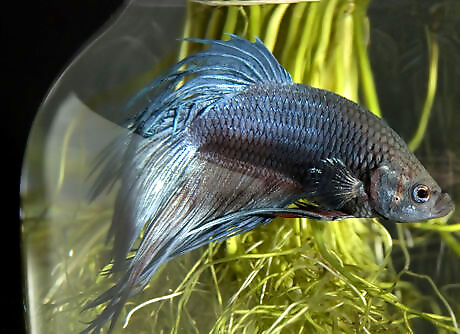
Learn as much as possible. When attempting to breed any animal, it is important to know as much as you can about the species. Research betta care and breeding. There are many great websites and books. More than 600 eggs can come from a single spawn, meaning that you could end up caring for more than 500 betta fish if most survive! You need to know beforehand what you want to get out of the experience. Are you interested in genetics, breeding for show, or supplying a local pet store? Or are you simply in love with bettas and want to take your hobby to the next level? Breeding for show or supply is a big undertaking that will require a large investment of time, space, and money. Due to the high start-up and supply costs, it is very difficult to make a profit breeding bettas, so this should not be your goal for some time.

Set up your permanent tanks. When you are ready to try breeding, you need to first prepare to bring your breeding pair home. Set up two tanks as shown in Set Up a Betta Tank. Be sure to cycle the water in both tanks before bringing home any fish.

Obtain a breeding pair. Bettas breed best when they are young, so you will have the most success if you find a reputable breeder either online or in your area to purchase a pair from. If you are able to find a breeder in your area, they can also be an invaluable source of information. Make sure the male and female are about the same size, and consider getting two pairs in case the first pairing doesn't work out. You do not want to breed pet store betta fish, as they are usually severely inbred, and have multiple genetic/health problems.
Building the Conditions for Breeding

Let them settle in. It's best to have your bettas for a few months before you start breeding to allow them to adapt to their environment. Remember, however, that males breed best when they are no more than 14 months old. Plan to breed them when you have a long, uninterrupted stretch of free time. Once you introduce the male and female, you will need to devote at least a few hours every single day for more than 2 months to caring for the pair and their young. Make sure you don't have any vacations, business trips, or high-stress events coming up.
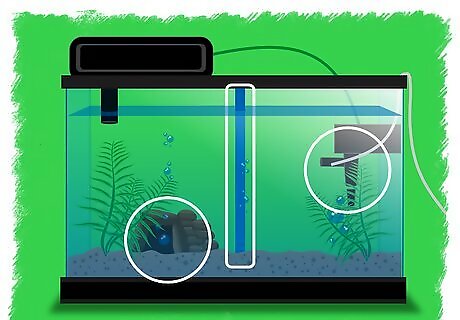
Set up your breeding tank. The breeding tank should be 5–10 gallons (18.9–37.9 L) and be equipped with a removable divider, a few hiding places, an adjustable filter (such as a sponge filter with a gang valve), and a heater set to around 80 °F (27 °C). Never add gravel or other substrate to the breeding tank because the eggs will get lost when they fall to the bottom. Only fill this tank with 5"-6" of water, and set it up where there are few distractions, such as other fish, bright colors, and human activity.
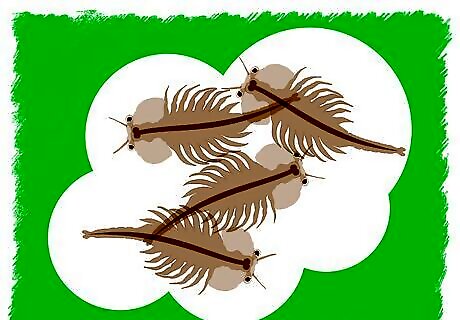
Start feeding live food when you are ready to breed them. Live brine shrimp or bloodworms are the best bet, but other worms, crickets, roaches, and other insects (cut up) will also work. It's a good idea to raise these yourself or purchase them from a pet store or breeder to avoid the bacteria, dirt, and chemicals that wild insects could be carrying. If live food is unavailable, you can also try frozen or freeze-dried brine shrimp and bloodworms.

Begin raising fry food. Betta fry are very small, and only eat live food, so you will need a supply of very very small live food to feed them when they are ready. Start now to be sure you have a good supply in a few weeks when you need it. Microworms are probably the best food, but some breeders prefer infusoria or vinegar eels. Baby brine shrimp can also be fed, but only in moderation alongside another food source, as too much may cause swim bladder disorder.

Introduce the pair. When the live food cultures are going strong and the breeding pair has been eating live food for a week or two, you are ready to introduce your bettas. Move the male and female so they can see one another clearly, but are separated. You can either put their tanks next to each other, or introduce them to opposite sides of the tank divider in the breeding tank. It is essential that they are able to see each other before being put together to minimize the risk of serious injury. Some breeders release males into an undivided breeding tank and use a clear plastic cup or oil lamp chimney to introduce the female. When using this method, the female should only be introduced for a few hours each day, as she is being contained in a very small space. Let them watch one another for a few days. Some breeders then separate the pair for a few days before introducing them for a few more days, then proceeding to the next step.

Observe their behavior. Watch the bettas to see if they seem interested in one another. The male will swim around, displaying his fins, flaring and generally showing off. The female will display vertical bars on her body and will angle her head down submissively. Some aggressive displays are normal, but if they are flaring and trying to attack one another through the divider, do not put them together. Instead, it may be best to separate them and try again later, or try a different pair of betta. Sometimes the betta fish fight so it would be better if you take a little time to watch and wait.
Breeding Your Bettas
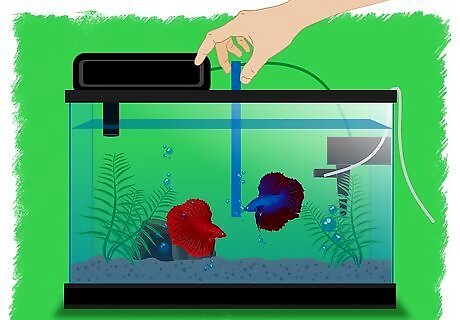
Remove the divider. Once your male is ready to breed, he will build a large bubble nest which will take 2-3 days. When this happens, turn off the filter and release the female into the tank, but be sure to keep an eye on the pair. The male will probably bully her some, nipping at fins and chasing her around. This is ok as long as neither fish's life is in danger. This courtship may last several hours or even days. Be sure there are plenty of hiding places for the female to escape the bullying, and check on the pair regularly to prevent serious injuries.

Let nature take its course. The male will finally get the female under his bubble nest and they will embrace. It may take a few embraces to produce eggs. Then the female will go into a 'zombie-like' state while the white eggs fall to the ground from her little white ovipositor. The male will swim down and scoop them up, putting them one by one into the nest. Some females will help with this once they recover, but others will eat the eggs, so watch carefully and remove her if she is eating them. They may embrace many more times, but eventually the female will stop releasing eggs.

Remove the female betta. Once the female is done releasing eggs, the male will bully her again, and she will hide. Gently scoop her out and put her into her own tank. Treat her tank with Maroxy to help her fins heal. It is a good idea to treat the breeding tank with Maroxy, too, to prevent fungus from killing the eggs.
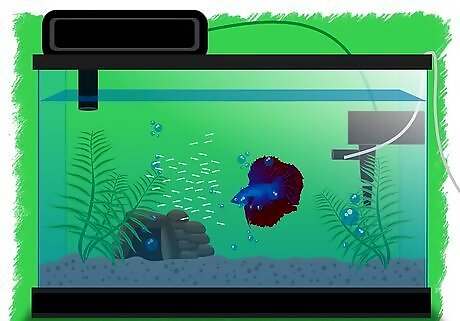
Leave the male in the tank until the fry can swim around . This will be about three days after hatching. Some breeders will not feed the male at all during this time. This is supposed to reduce the risk of the male eating the eggs and fry. Other breeders will feed him a small amount of food every second day. If you choose to feed him, do not be alarmed if he does not eat right away, but continue to offer the food, and gently remove uneaten food with a turkey baster. Keep the filter off to prevent any current from disturbing the fry, but keep the tank light on day and night.
Caring for the Fry

Wait for fry to hatch. When the fry initially hatch they will hang from the bubble nest, and the male will replace any that fall. After a few days, the fry will begin "free-swimming," swimming horizontally and venturing away from the nest. Before this, the fry will be feeding on what's left of the egg yolk, and cannot eat on their own.

Remove the male from the tank, being very careful not to net any fry. He can return to his normal routine and feeding schedule. If he is still looking ragged from the courtship, add some Maroxy to help him heal.
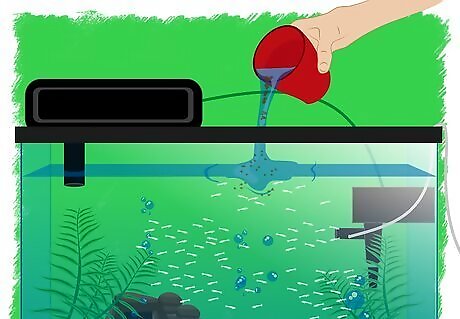
Feed the fry. As soon as you remove the male, feed the fry a small portion of live microworms. Feed twice a day, and watch closely to see how much is eaten. If live microworms are still present when it is time for the next feeding, you can skip it since the fry still have food. If you see many dead microworms, you are overfeeding, so cut back on the portions. Fry need to be fed very small, living food such as, Infusoria: These will feed the fry for their first week of life; Microworms: you will need to buy a starter culture, after that you never have to buy them again. Good for fry 3-40 days old; Baby Brine Shrimp: These are easy to hatch and are the easiest to control how much to feed, but feeding too much will result in swim bladder disorder;

Give the fry time to grow. Keep the fry warm at 80 °F (27 °C) and cover the tank to prevent drafts and evaporation. Continue to feed increasing amounts of food. When the fry outgrow the breeding tank, they will need to be moved to a larger tank. Not all fry will survive the first few weeks, but if you see large numbers dying each day, you probably have a problem. Check temperature, chemical levels, and consider the possibility of treating for infections. When the fry are 1.5 - 2 weeks old, turn on the filter, but restrict the flow with a gang valve so it is barely noticeable. When the fry are two weeks old, begin performing small (10%) water changes every few days to keep the tank clean and free of dead food, but use a gentle siphon or turkey baster to prevent injuring the fry, and add clean water very slowly. You can begin turning off the tank light at night. Over the next few weeks, gradually increase the flow of the filter, watching fry carefully to be sure they are strong enough to swim against the current.

Place the fry into grow-out tanks. By the time the fry are two weeks you should move them to at least a 20 gallon (75.7 L) tank. Make sure the temperature and water in the tank are the same as what the fry are used to. Fry are delicate — one slip up could result in them dying. If you used a half-filled five or 10 gallon (37.9 L) tank you can fill the tank up and move them when they are 4-5 weeks old.
Nursing the Fry to Adulthood
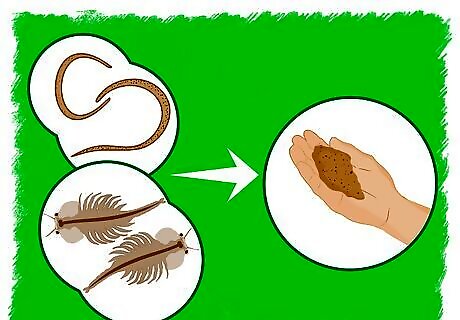
Wean the fry off live food. When the fry are about a month old you can gradually start switching the fry to frozen and then freeze-dried and flake or pellet food. Make sure the food is crushed small enough for their tiny mouths. Offer small amounts, and wean them off the live food slowly. Always remove uneaten food. Putting guppy fry in the tank may help as they will eat the pellets. Then the betta fry will start to eat them too.

Separate males. When the male fry begin fighting (anywhere from 5-8 weeks of age), it is time to remove them from the tank. Place them in individual tanks close to one another, as they can become depressed if suddenly isolated. Males that are not fighting can be left with the females until they become aggressive. Some males will refuse to eat the first day or two; try feeding them live food to stimulate their appetite. Continue to separate out all male and aggressive fish as they become apparent. In the following days and weeks you will want to begin isolating the males with opaque dividers, as they will stress each other out, flaring and trying to attack the males in adjacent tanks.
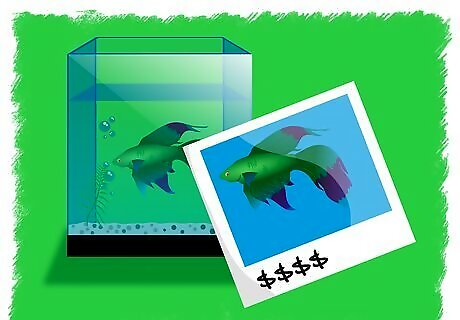
Decide the future of your spawn. If you are selling your fry, you will want to start contacting potential buyers. Most fry will begin to display their adult traits by 10-11 weeks, and you can begin to select the best fish for future breeding or take pictures to send to buyers. If you are trying to create a genetic line, you will only want to select the best few fish from each spawn to continue breeding, and sell or give away the others, or you will quickly find yourself with more bettas than you can possibly take care of.

Sexing Young Bettas. This takes time and experience to see; sometimes experienced breeders find themselves accidentally putting two males together. Males have longer fins, however young males have short fins. Males flare at each other. Females usually won't, but females can be just as aggressive as males. Females have an egg spot, which is located on her belly; this is where eggs are released during spawning. Males blow bubble nests; if you jar a Betta and it blows a nest, it's a male. However, some females also blow bubble nests, so be sure to double-check.

















Comments
0 comment